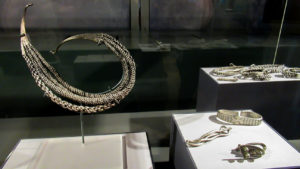Castle Rising is a ruined medieval fortification in the village of Castle Rising, Norfolk, England. It was built soon after 1138 by William d’Aubigny II, who had risen through the ranks of the Anglo-Norman nobility to become the Earl of Arundel. With his new wealth, he constructed Castle Rising and its surrounding deer park, a combination of fortress and palatial hunting lodge. It was inherited by William’s descendants before passing into the hands of the de Montalt family in 1243. The Montalts later sold the castle to Queen Isabella, who lived there after her fall from power in 1330. Isabella extended the castle buildings and enjoyed a regal lifestyle, entertaining her son, Edward III, on several occasions. After her death, it was granted to Edward, the Black Prince, to form part of the Duchy of Cornwall.
Castle Rising was built soon after 1138 by William d’Aubigny II, an upwardly mobile Anglo-Norman noble who owned the surrounding manor of Snettisham. William married Adeliza of Louvain, the widow of King Henry I in that year, and became the Earl of Arundel in 1139. This transformed his social position, and one chronicler at Waltham Holy Cross complained how he “became intolerably puffed up … and looked down upon every other eminence in the world except the King”. With his new wealth, William built Castle Rising and New Buckenham Castle in Norfolk and expanded Arundel Castle in West Sussex.
The castle was located 5 miles from the port of King’s Lynn. In the 12th century, it would have typically have been reached by boat, through a channel in the marshy Babingley River that ran nearby. Following the Norman conquest of England, the land had been granted to Bishop Odo, the Earl of Kent, who may have used it as an administrative center; there were many Saxo-Norman buildings on the site of the later castle. Although Norfolk was a prosperous region during this period, the location of the castle was not strategically important: its only military significance would have been as a regional muster point, and the surrounding lands were thinly populated, with poor, acidic agricultural soil. The attraction of the site to William is believed to have been that it was a relatively cheap and easy place in which to build a substantial new building and establish a large hunting park.
Massive resources were required to construct Castle Rising, which included three baileys with large earthwork defenses and a stone keep, with an adjacent deer park just behind the castle. As part of the project, the existing settlement was moved away to the north, where it became a planned settlement adjacent to the new castle. A pre-existing Norman chapel on the site, built around 1100, was encircled by the castle defenses, and the new parish church of St Lawrence was built in the town instead, although it is possible that this church also pre-dates the castle.
It is uncertain how often William actually stayed at his new castle. He and his wife probably preferred to reside in their estates around Arundel in the south of England, and both William and his descendants chose New Buckenham Castle, rather than Castle Rising, to serve as the caput, or the main castle, for their Norfolk landholdings.
A prolonged civil war known as The Anarchy broke out in England from 1138 until 1154, between the followers of King Stephen and Empress Matilda, only ending when Matilda’s son, Henry II, finally inherited the kingdom. Despite William having backed Stephen during the war, after the end of the conflict he proved a loyal supporter of Henry and was allowed to retain his possessions. Henry clamped down on the operation of the regional mints, however, and closed the facility at Castle Rising. A second, rapid phase of construction work on the castle then occurred, probably in the 1170s in response to a major rebellion against Henry II. William supported the King and fought against the rebels at the Battle of Fornham in neighboring Suffolk. Around this time the height of the earth defenses was doubled and the internal level of the west bailey raised to form a platform.
The castle was inherited by William d’Albini III, and in turn by his son, William IV, and grandson, William V. William V died in 1224, leaving it to his brother Hugh. Probably by this time the chapel inside the castle walls had fallen out of use as a religious building and was instead employed for secular purposes. The top 3.7 meters of the keep’s walls are distinctively different from the rest of the building, and one theory to explain this is that the castle keep was not in fact completed during William II’s lifetime and that the final work on walls was carried out between 1200 and 1230 by his descendants. Hugh died childless in 1243, and the castle then passed to Roger de Montalt.










